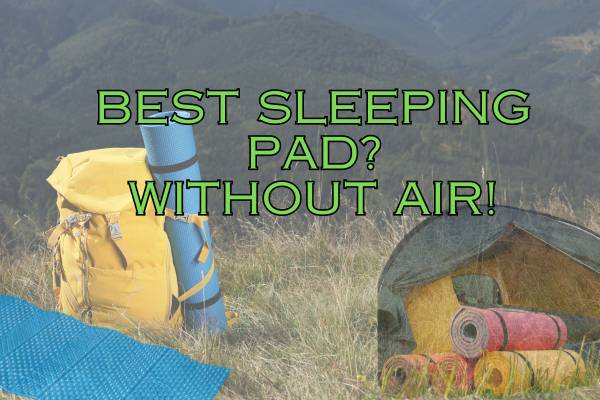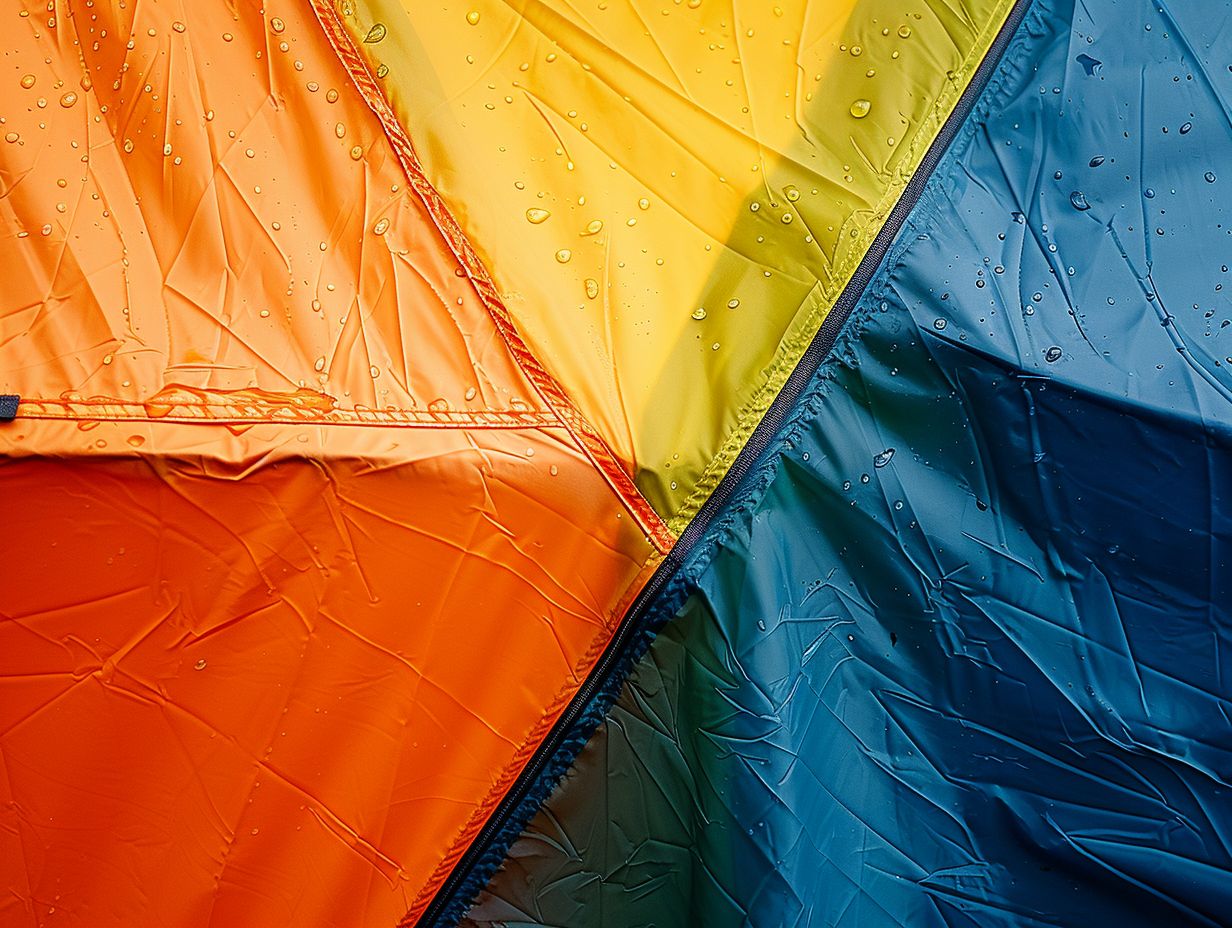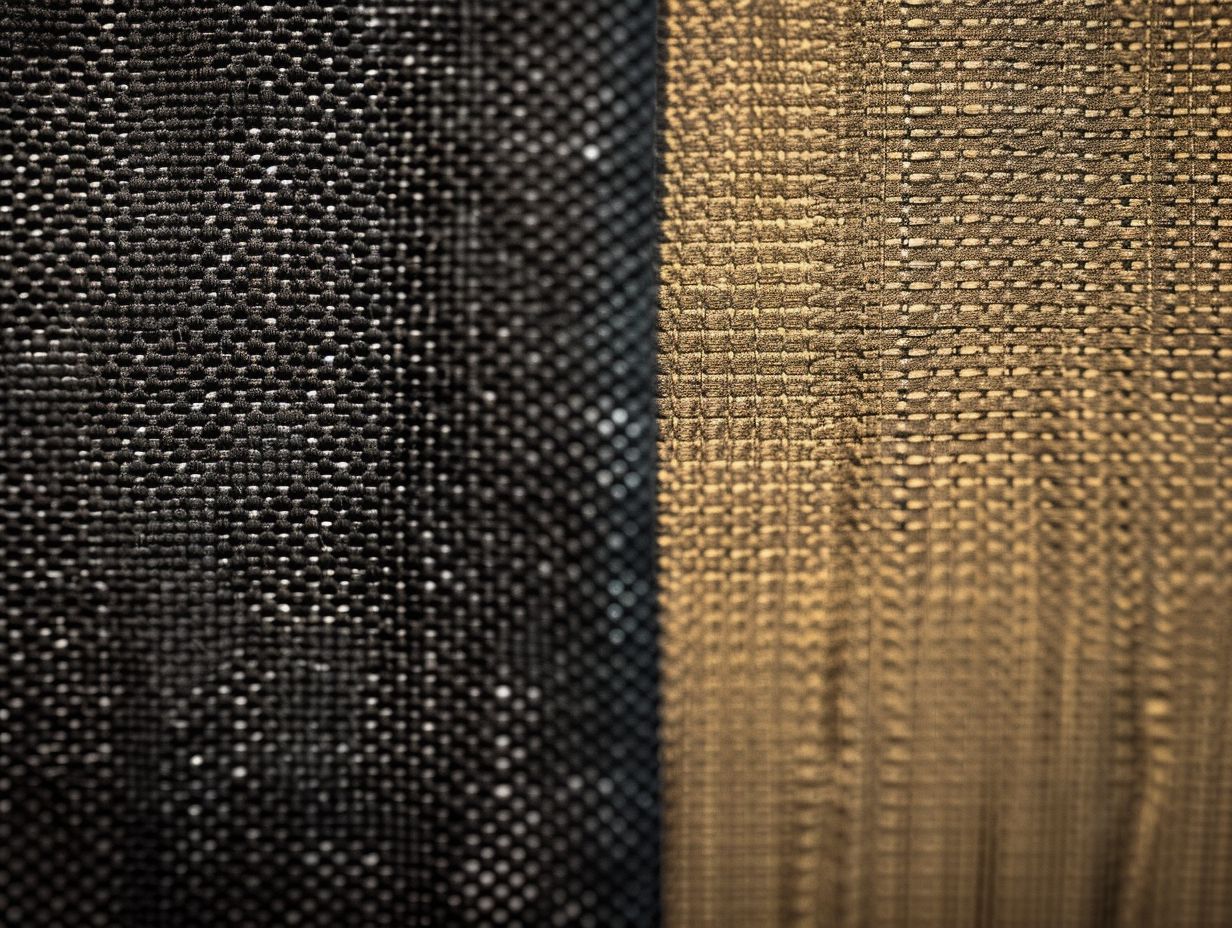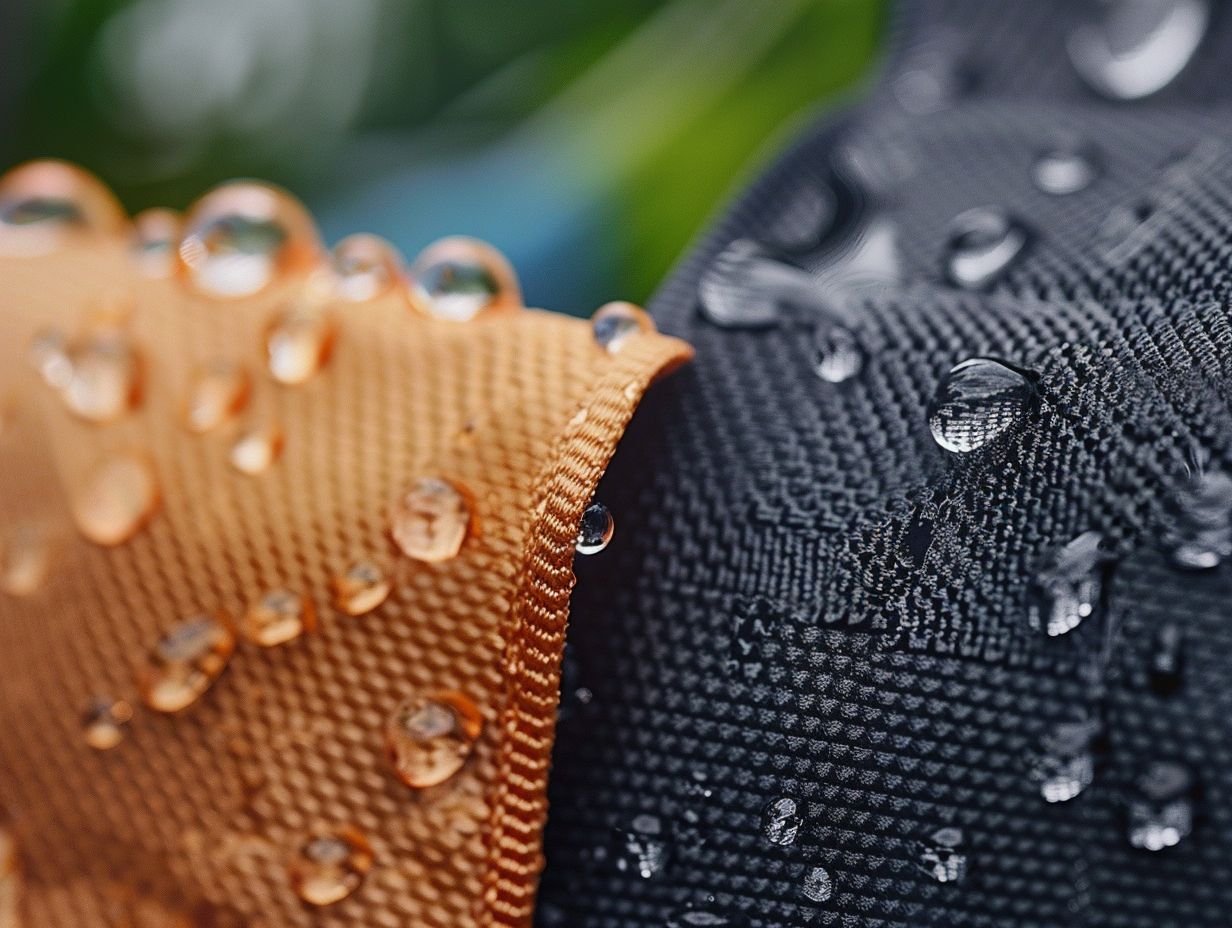Sleeping outdoors can be a transformative experience, reconnecting us with nature and providing a break from the relentless pace of modern life. However, the quality of your sleep during a camping trip is crucial to enjoying the experience to its fullest.
This is where foam sleeping pads come in, offering a lightweight and durable solution to comfort and insulation from the ground. Unlike their inflatable counterparts, foam pads won’t puncture and require little setup, making them a reliable choice for hikers, backpackers, and casual campers alike.
A crucial aspect of choosing the best foam sleeping pad is considering the material and structure. Closed-cell foam pads are known for their firmness and superior insulating properties, which keep the cold ground at bay. Some are designed with textured surfaces to enhance comfort and prevent slipping during the night.
Others might feature egg-crate patterns that add extra padding and trap warm air. These characteristics need to be balanced against the pad’s weight and packability since carrying less weight is often a priority in the backcountry.
When it comes to purchasing foam sleeping pads, there are key factors to consider. Durability, comfort, insulation R-value, size, and weight of the pad are of paramount importance. The right choice balances the need for comfort with the practicalities of trail life.
The R-value, a measure of thermal resistance, is particularly important in cold weather; a higher R-value means better insulation from the cold ground. For many adventurers, choosing a pad also entails a trade-off between a minimal weight and sufficient comfort.
These are the pads we will have a look at in this post:
| Sleeping Pad Model | Durability | Comfort | Insulation | Weight | Special Features |
|---|---|---|---|---|---|
| Therm-a-Rest Classic Pad | Exceptionally durable against rough terrains | Harder surface, might not satisfy everyone | Excellent insulation, warm on chilly nights | Lightweight | Textured surface, egg-crate pattern for extra padding |
| Thinton Comfort Pad | Highly durable, withstands rugged use | May feel firm for those seeking plush cushioning | High-quality XPE material with aluminum film for insulation | Lightweight | Moisture-proof and waterproof |
| Wolf Walker Double Pad | Durable, non-inflatable and puncture-safe | Comfortable, but may be firm for some | High-quality XPE foam material | Light (2.3 lbs) | Waterproof, foldable design with included straps |
| Widesea Sleeping Pad | Not specified | May lack cushioning for some users | Excellent thermal capture surface | Ultralight | Versatile for outdoor and indoor use, egg-carton design |
| Nemo Switchback | Durable, withstands rough terrain | Less cushioning, narrow width | Reflective layer adds warmth | Ultralight | Metalized insulation, compact fold |
| BKS Egg Crate Foam Pad | Durable IXPE foam, suitable for various terrains | Might be too thin for plush cushioning preference | Lightweight design may not provide enough insulation in colder environments | Lightweight | No unpleasant odors, foldable design |
| KingCamp Cot Pad | Not specified | Comfortable with soft cotton top, but may need additional padding | Not waterproof | Lightweight | Anti-slip dots, versatile for cots or ground use |
In identifying the best foam sleeping pads on the market, we meticulously scrutinized an array of options, assessing their performance across a variety of terrains and conditions. Our comprehensive testing sought to find the optimal blend of comfort, weight, and durability, suitable for the diverse needs of open-air enthusiasts.
Top Foam Sleeping Pads for a Good Night’s Rest Outdoors
We have carefully selected our top picks for foam sleeping pads, ensuring each option offers a combination of comfort, durability, and portability. Whether you’re a seasoned camper or gearing up for your first outdoor adventure, our roundup will help you discover the perfect foam sleeping pad to enhance your sleeping experience under the stars.
Nemo Switchback – Personal Favorite!

We think the Nemo Switchback is a solid buy for anyone in need of a reliable foam sleeping pad that balances comfort with durability for outdoor adventures.
Pros
- Reflective layer adds warmth in cooler conditions
- Compresses well, making it easy to pack
- Durable material withstands rough terrain
Cons
- Bulkier than inflatable options when packed
- Less cushioning than air pads, which might affect comfort
- Narrow width may not be suitable for all sleepers
We’ve had the chance to sleep on the Nemo Switchback on various grounds and found its construction quite supportive. The way it conforms to our bodies made us forget the ruggedness beneath, especially on rocky terrains. The metalized insulation really does its job by reflecting our body heat, giving us an extra layer of warmth on those chilly nights.
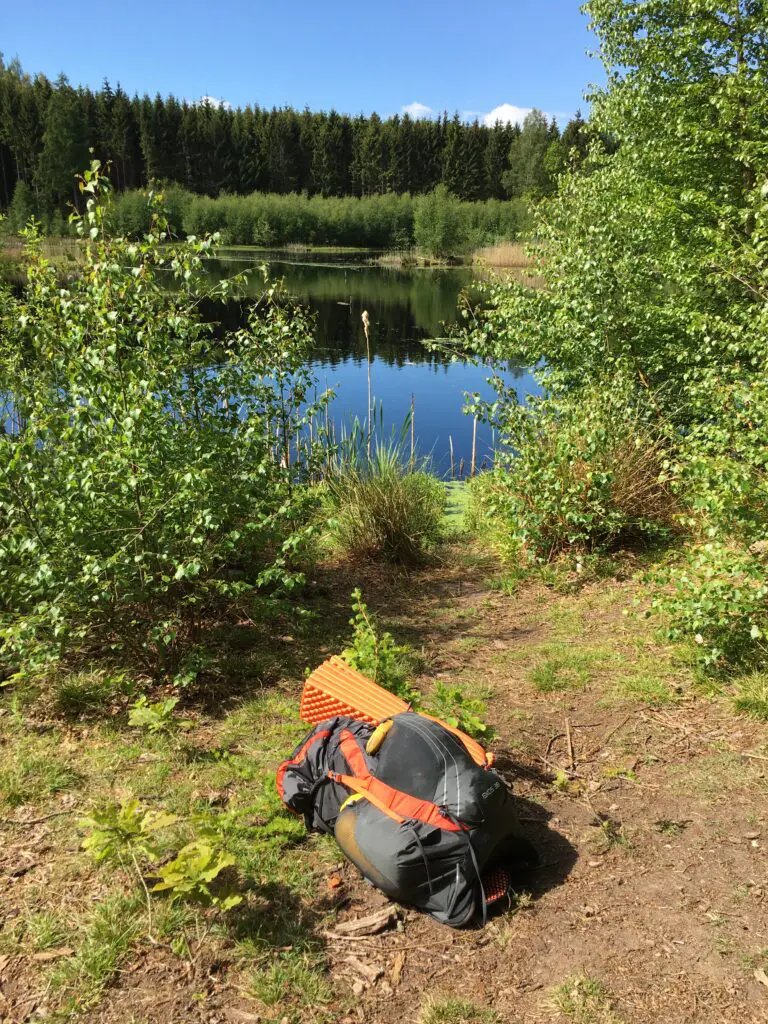
During our backpacking trips, every inch of pack space is precious. We appreciated how the Switchback’s meticulous design allows for a compact fold, sliding nicely into our gear without a hitch. Even when hiking at higher altitudes where every ounce feels heavier, this pad’s lightweight nature kept us moving without feeling weighed down.
One thing we can’t overlook is how tough this thing is. It’s been scraped over branches and dragged across the campsite, and still, it bounces back to its original shape without any noticeable wear. While it’s true that there’s less padding compared to inflatable mats, for us it’s a fair trade-off for not having to worry about punctures or leaks.
This pad may not slip into smaller backpacks easily due to its size when rolled, but strapping it on the outside worked just fine. Admittedly, it’s not as plush as our at-home bed, but after a long day of trekking, the Switchback provided the comfort we needed to wake up refreshed and ready for another day. For anyone looking for durability over maximum comfort, this pad is a worthy companion on the trail.
Therm-a-Rest Classic Pad

We recommend this pad for its durability, comfort, and exceptional insulation, a steadfast companion for all our outdoor adventures.
Pros
- Exceptionally durable against rough terrains.
- Impressively lightweight, a blessing on long hikes.
- Insulation is on point, keeping us warm on chilly nights.
Cons
- Not as compact as inflatable alternatives.
- Harder surface feel might not satisfy everyone.
- Width potentially snug for more restless sleepers.
Having recently returned from a weekend in the mountains, we’ve grown quite fond of the Therm-a-Rest Classic Pad. Its lightweight design never weighed us down, which is critical when we’re already hauling a hefty pack. At the campsite, unrolling the pad was a breeze, and it provided a welcome layer of protection from the hard and cold ground.
The peaked texture design is a notable feature – it’s not just for show. It cradles and insulates our bodies, which genuinely helped us get a better night’s sleep. We’ve spent enough nights outdoors to appreciate the difference that solid insulation can make, and this sleeping pad didn’t disappoint, even as temperatures dipped.
Durability is another strong suit of this pad. On rough terrain loaded with twigs and rocks that seem intent on ruining gear, the Therm-a-Rest has held strong. Coupled with its economical price, we view it as an investment for many camping trips to come. While it’s not the plush dream some might wish for, it does the job effectively and without fuss. After multiple uses, it shows no sign of wear – a testament to its quality.
Thinton Comfort Pad

After thorough testing, we found this pad to be a reliable companion for outdoor adventurers who need durability and insulation against the elements.
Pros
- Highly supportive XPE material with an aluminum film for insulation
- Lightweight and foldable, making it easy to carry on any excursion
- Moisture-proof and waterproof, ensuring a dry night’s sleep under the stars
Cons
- The thinness may not be suitable for those seeking very plush cushioning
- Not as compact as some air pads when trying to minimize pack volume
- Limited color options for those wishing to coordinate with other gear
This Thinton Comfort Pad has proven to be a solid foundation for a restful night in the great outdoors. Its closed-cell XPE foam design offers a durable surface that withstands rugged use on rocky or uneven terrain. The aluminum backing reflects heat back to the body, enhancing warmth during those cooler evenings under the stars.
With its compact folding design, our team found it remarkably convenient to bring along on various trips. From trekking through the mountains to camping in forested areas, the Thinton Comfort Pad has become a mainstay in our gear list. It slides easily into our packs without adding significant weight, a major plus for long-distance hikers and those conscious of their load.
While lying down on this pad, we could feel the difference in comfort it provides. The waterproof and moisture-proof features are notable, especially when camping in damp conditions. It acts as an essential barrier, protecting us from the dew-laden ground. However, if you’re used to deeper cushioning, this pad may feel a bit too firm, although perfectly suitable for back support.
In our collective experience, this Thinton pad shines in its simplicity and effectiveness. It’s a no-fuss piece of gear that has repeatedly proven its worth in diverse conditions. While it may not compress as much as some air pads, the space it does take is a worthwhile trade-off for the durability and comfort it brings to our camping experiences.
Wolf Walker Double Pad

After using this pad, I firmly believe it strikes an admirable balance between comfort and convenience for outdoor activities.
Pros
- Exceptional comfort from the high-quality XPE foam material.
- Highly portable with its foldable design and included straps.
- Waterproof nature ensures dry sleep, even on damp ground.
Cons
- May be too firm for some sleepers’ preferences.
- At 2.3 lbs, it is ultra-light but there are lighter options available.
- A sizeable footprint when folded might not fit in all backpacks.
Our recent camping experience got notably better with the Wolf Walker Double Pad. Lying on this pad, we noticed the dedicated support it offers to pressure points, thanks to its high-quality XPE foam. Since it’s non-inflatable and puncture-safe, we were at ease without worrying about air leaks.
Transporting it to our campsite was a breeze; the pad folded up neatly, and with the compression straps provided, we attached it right to our backpack. The peaks and valleys design isn’t just for show; they complement each other to save space when packed.
Sleeping side by side, we appreciated the double sleeping pad feature, ensuring we both stayed comfortable and warm through the night. The waterproof material was a boon during a misty morning—waking up dry despite the dewy conditions around us was reassuring.
In summary, the Wolf Walker Double Pad is a solid companion for couples who enjoy camping. Its light, compact, and moisture-proof features make it a reliable gear. The comfort it provides and its ease of transport only reinforce our decision to add it to our outdoor essentials.
Widesea Sleeping Pad

We recommend this sleeping pad for those who value comfort and warmth without the extra weight during their outdoor adventures.
Pros
- Great insulation provided by the thermal capture surface
- Lightweight design makes it barely noticeable in a backpack
- Versatile usage, suitable for both outdoor activities and indoor exercises
Cons
- May not provide enough cushioning for some users
- The folded size might be a bit bulky for minimalist backpackers
- Limited width could be a concern for those preferring more sleeping space
On our last hiking expedition, we had the pleasure of using the Widesea Sleeping Pad. It unfurled effortlessly and provided a surprisingly cozy surface against the rugged forest floor. Its egg-carton design was not just a visual treat but did an admirable job aligning with our body contours.
The reflective thermal surface was a game-changer as it sent body heat right back to us, making the chilly nights much more bearable. Its ultralight presence in our packs was a blessing during those long treks where every ounce counts.
Not only was it a trusty companion in the wild, but back at home, its utility didn’t wane. We found ourselves reaching for it for a quick yoga session or as a comfortable spot for a picnic in the park. This pad is certainly one that adapts to our needs, indoors and out.
BKS Egg Crate Foam Pad

We think this pad is a smart pick for budget-conscious adventurers seeking a reliable cushion for the outdoors.
Pros
- Excellently portable with its foldable egg-crate design.
- Durable material offers a comfortable sleeping surface that withstands rough conditions.
- No unpleasant odors, making it great for immediate use without airing out.
Cons
- Might be too thin for those preferring plush cushioning.
- The lightweight design might not provide enough insulation in colder environments.
- May feel the underlying surface if used on rocky or uneven ground.
After a full day of hiking, there’s nothing like unwinding on a pad that balances comfort with the necessity of traveling light. We recently tried out the BKS Egg Crate Foam Pad on a weekend trip, and its compact design was a game changer. Once unfolded, it provides a surprisingly comfortable space to lay down, considering the minimal weight and volume it adds to our gear.
Durability is often a concern with outdoor gear but, despite its featherweight, the IXPE foam stands up to the challenge. We’ve used it on different terrains, from soft grasslands to pebbled mountain outcroppings, and it’s held up without showing signs of wear and tear. Plus, setting up camp was a breeze given that there’s no inflation required – just unfold and get ready to rest.
The egg-crate shape does more than just save space in our packs. It also adds to the support structure of the pad, cradling us gently after a long trek. However, if you’re expecting a cushion that completely shields you from the hard truths of the wild, this might not be your best bet. We felt some of the more unforgiving bumps beneath us, but overall, it did the job well for short stays without adding too much bulk.
KingCamp Cot Pad

After a recent night under the stars, we can vouch for the comfort and convenience this pad brings to outdoor adventures.
Pros
- Enhances cot comfort with soft cotton top
- Anti-slip dots keep the pad secure
- Versatile for cots or ground use
Cons
- Not as thick as some may prefer
- Absent of waterproofing
- Could require additional padding for some sleepers
We’ve recently tested the KingCamp Cot Pad, and it’s a notable improvement to the standard cot experience. The soft cotton cover is a game-changer; it feels warm and pleasant against the skin, a stark contrast to the often rough and ready materials found in camping gear. It’s a snug fit on standard cots and the elastic straps ensure it stays put through the night.
The flexibility of this pad also impressed us. On colder nights, it morphs seamlessly into an additional layer of insulation on the ground, enhancing the warmth of our sleeping bag. The pad is comfortably warm and doesn’t have the crinkly or slippery feel some synthetic pads do.
However, it’s not without its downsides. While it does provide a softness boost, those accustomed to ultra-plush sleeping arrangements might find it lacking. It’s important to manage expectations—this isn’t a memory foam mattress. Also, in damp environments, we realized an added waterproof liner beneath might be necessary since this pad doesn’t repel water.
In conclusion, KingCamp has delivered a versatile product that makes an appreciable difference on any camp cot. It’s lightweight, easy to carry, and enhances comfort significantly. While it may fall short for those desiring a super-cushioned sleep or waterproof material, it’s perfect for campers seeking a simple, comfy upgrade to their sleeping setup.
Buying Guide
Identifying Your Needs
Before choosing a foam sleeping pad, consider the type of camping or backpacking trips you plan to undertake. Are you a long-distance hiker needing ultralight gear, or a car camper focused on comfort?
- Weight: Ideal for backpackers; the lighter, the better.
- Thickness: More thickness offers greater comfort but adds bulk.
- Length: Should accommodate the height of the sleeper.
- Width: A wider pad might be more comfortable for turning sleepers.
Key Features to Look For
Durability, comfort, and insulation are paramount. We’ll explore the features you should evaluate.
- R-Value: Indicates the pad’s insulation efficiency; higher numbers mean better insulation.
- Material: Affects comfort and longevity; look for robust, yet comfortable materials.
- Packed Size: Important for backpackers; a smaller packed size increases portability.
- Surface: A non-slip surface keeps the pad in place during the night.
Comparing Options
When browsing foam sleeping pads, use a simple table format to compare your options. Here’s an example layout:
| Feature | Option 1 | Option 2 | Option 3 |
|---|---|---|---|
| Weight | |||
| R-Value | |||
| Thickness | |||
| Packed Size |
Practical Considerations
Finally, review practical matters such as ease of cleaning, whether the pad resists water, and how easy it is to pack away. We also recommend testing pads in-store if possible to get a firsthand feel for the material and cushioning.
- Ease of Cleaning: Look for water-resistant and easy-to-clean surfaces.
- Water-Resistance: A water-resistant pad will fare better in damp conditions.
- User Reviews: They can provide real-world insights into a pad’s durability and comfort.

